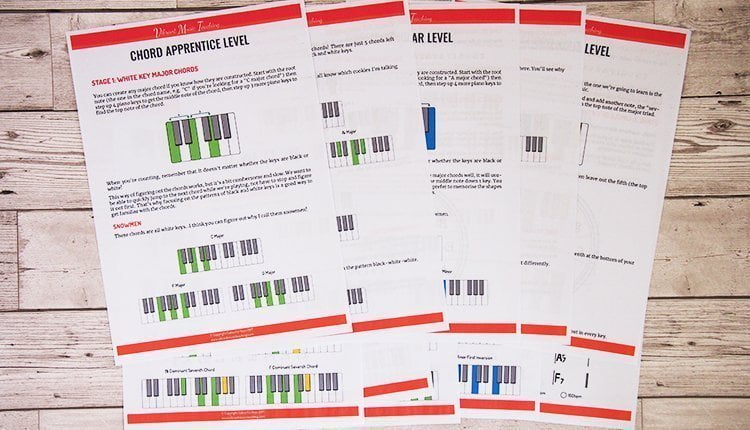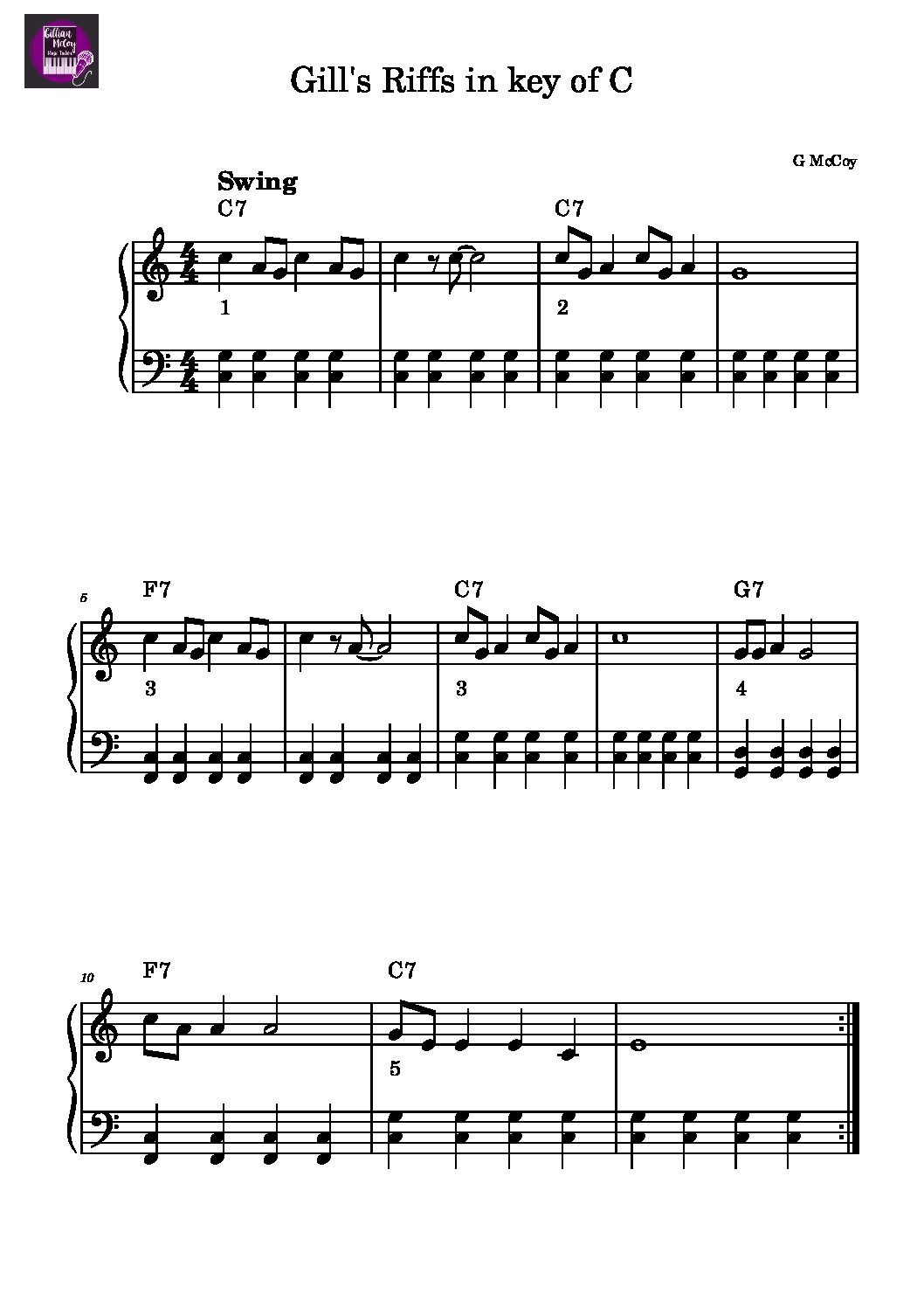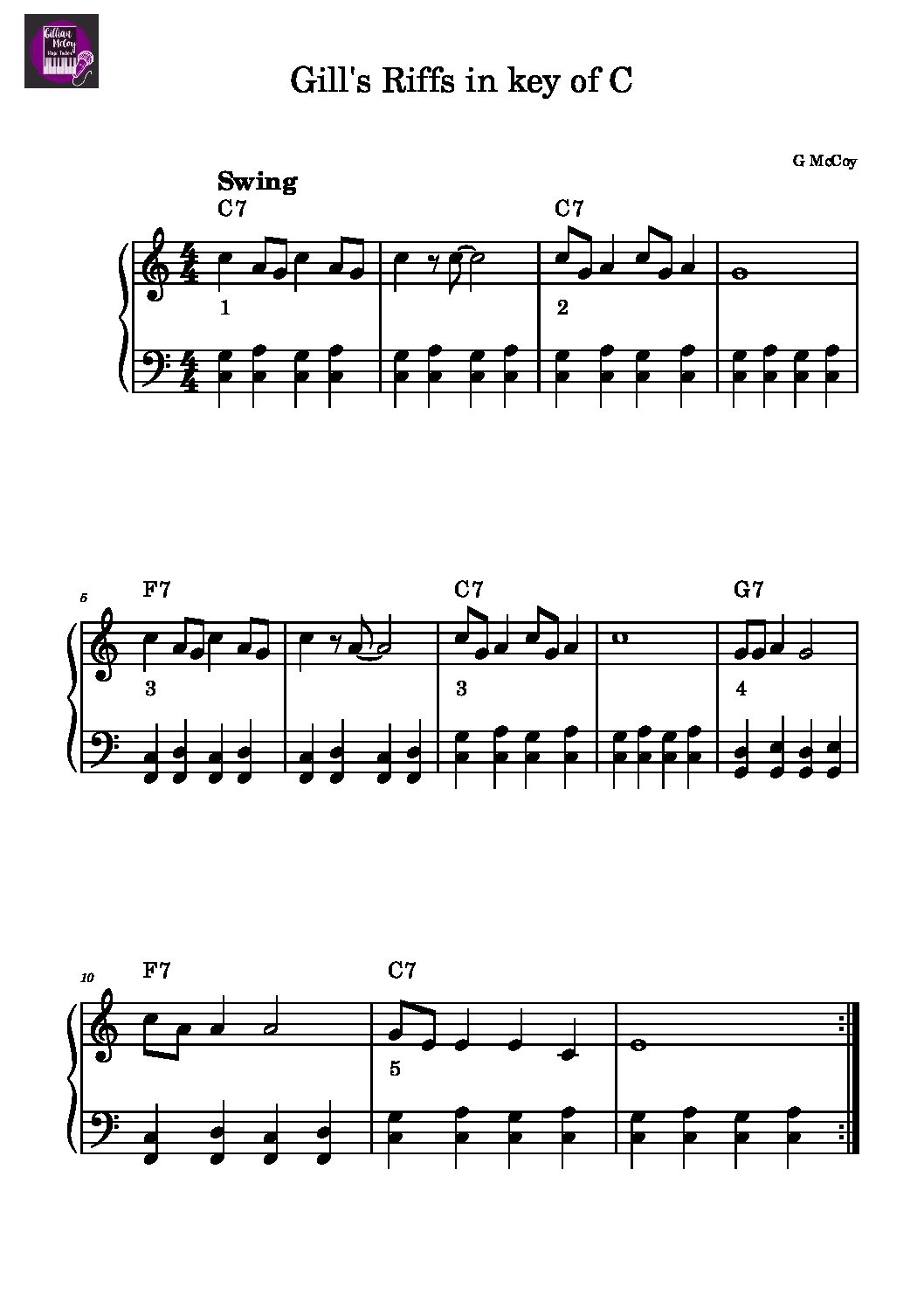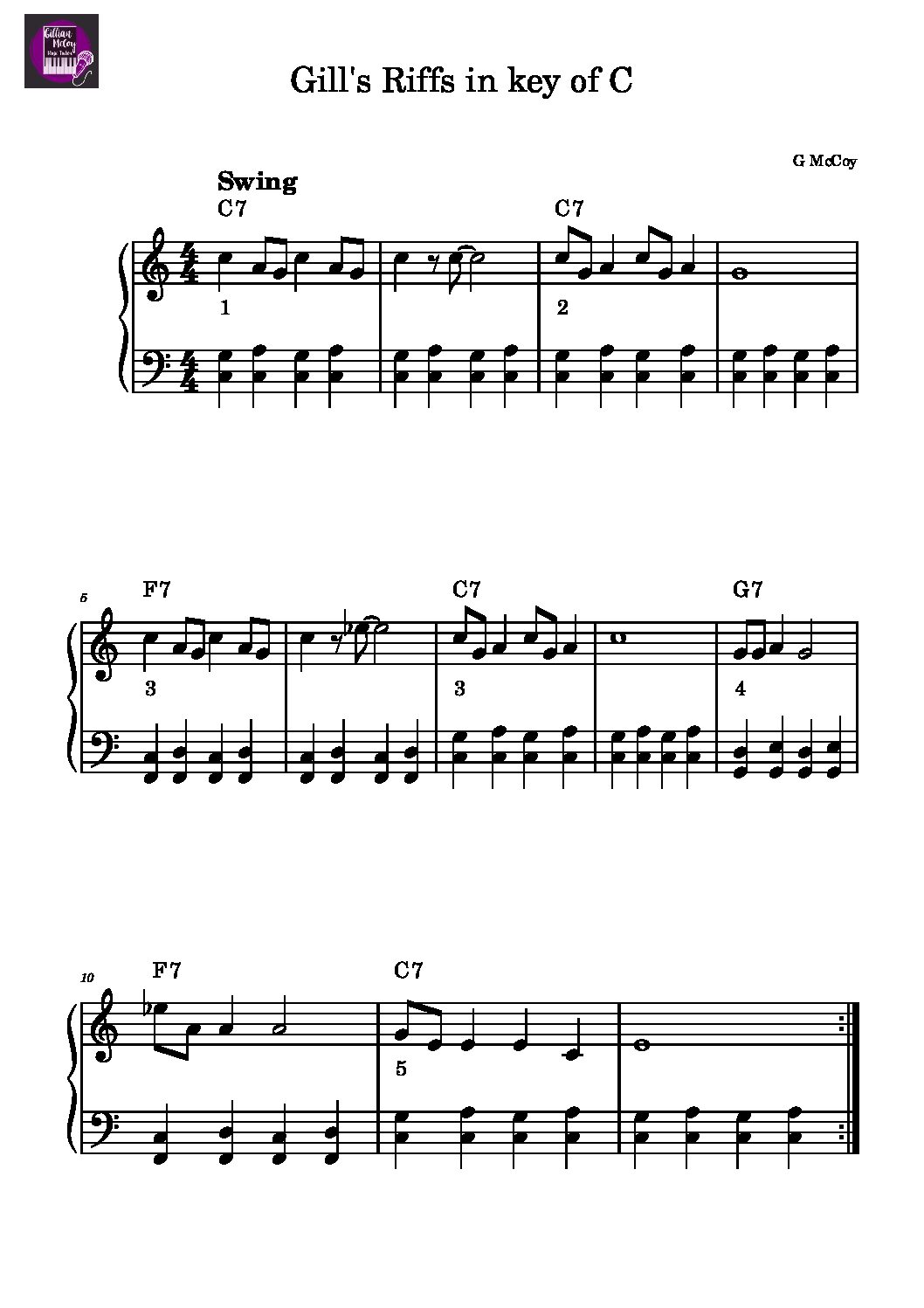
This post about teaching blues piano was written by Gillian McCoy. Gill is a contemporary piano and keyboard teacher from Reading, UK. She enjoys writing music for and singing in a band called WolfNote, knitting very colourful hats and spending time with her family. Find out more about Gill’s teaching studio at www.gillianmccoymusic.com and band at www.wolfnote.co.uk.
Have you ever experienced a classically trained piano student who fell apart when you asked them to play blues music for the first time? Or…gulp…maybe you fall apart when faced with the blues?

I don’t know about you, but I’m getting more and more requests from students who want to explore blues piano – especially from adults who have a more classical background.
It can be really fun to add your own piano riffs or make a chord chart come to life with blues music. But when it comes to teaching the blues to piano students…well, it can be daunting if you have a strictly classical background yourself, or if you don’t know where to start.
But it doesn’t have to be!
Let me lead you through some ideas for a first few happy and productive blues piano lessons. These will work whether you’re teaching adults or children, beginners or more advanced players.
Note: I’ve structured the following elements to take anywhere from 5 to 20 minutes of a typical lesson so that you can include teaching blues music in your regular weekly piano lessons. You may prefer to cover them all in a single extended lesson devoted to the blues or stretch them out into even smaller increments. Go with whichever suits you best!
What makes something “blue”?
At its most basic level, blues music is about everyday struggles – pain, sorrow, joy and melancholy – all rolled into one.
“When I sing the blues, I’m singing life.”
-Etta James
The blues is a collective and expressive, lyrical music with shared melodies, form, groove and harmonic structure. You could think about it more deeply as the shared experience of everyone.
Lesson 1: Getting Groovy
The piano takes on a more percussive role in blues music, supporting the singer or a solo instrument like the trumpet. This is called “the groove,” and it’s an important first step for your piano students to understand, especially if they come from a traditional classical background.

Some blues lessons might start with theory about 12-bar chord progressions or blues scales. This knowledge is important, but listening to the music first really helps to engage the ear and pique your student’s curiosity.
Get creative!
Listen to some blues music together and see if your student can feel the beat, or the “groove”, of the music. Here are some suggestions with varying tempi to try:
- I Got a Woman by Ray Charles
- Bearcat Crawl by Meade Lux Lewis
- Blueberry Hill by Fats Domino
- Give Me One Reason by Tracy Chapman
Lesson 2: Waxing Lyrical
Just as in classical repertoire, blues music has its own important form and structure.
Typically, blues lyrics are made up of three lines. The first 2 lines repeat and the 3rd is different. This pattern is repeated throughout the song, each verse playing variations on the first verse.
A great example of this can be found in Give Me One Reason by Tracy Chapman:
“Give me one reason to stay here, and I’ll turn my back around.
Give me one reason to stay here, and I’ll turn my back around.
I don’t wanna leave you lonely; you gotta make me change my mind.”
The chord progression and riffs will change at this point, too, but we’ll get to that later 😉
Get creative!
Ask your student to find some 3-line lyrical patterns in existing blues pieces. You could dedicate some lesson or lab time for this activity, or assign it as homework.
Once they’ve seen some examples, ask your student to think of something that gives them “the blues.” Then challenge them to come up with their own 3-lined lyrical motif.

Bonus: If you’re doing a group workshop, ask the students to share their blues lyric creations.
Lesson 3: Pentatonic Power
Once your students have created their lyrical pattern, it’s time to create the music that will underpin it – starting with the melody.
The pentatonic scale is a great place to start building melodies because it forms the basis for the blues scale (which we’ll meet in a moment.)
- The pentatonic scale is built on the 1st, 2nd, 3rd, 5th and 6th degrees of any major scale.
- The 4th and 7th degrees of a major scale are the weaker tones. These don’t exist in pentatonic scales, so you won’t have bum notes in your blues melody.
Bonus: Experiment by playing a RH C major scale over a LH C chord with your student. You’ll both notice that the 4th and 7th degree sounds pretty bad with the C chord, which shows why the pentatonic scale is perfect for blues melodies.
Get creative!
Here is an example of a typical 12-bar blues piece. This piece has 6 riffs built on the pentatonic scale, played with a swing beat. You could teach these by rote, or, if your students are more confident, they could sight read the music.
Have your student play the piece a second time, and ask them to:
- Vary the notes or the rhythm of one of the riffs
- Make up their own riff for the repeat
They might dive in straight away, or they might prefer to experiment at home. Some students will be more adventurous while some will be afraid to play without sheet music.
When teaching blues piano, be sure to let your student know that there is no right or wrong. You might be surprised by the cool riffs your students play in their next lesson!
Lesson 4: Connecting Chords
Next, we’re going to work on harmony by adding chords.
First, make sure that your piano student knows C, F and G chords (or open 5ths) before showing them how to add these chords to the song.
Their left hand will be playing independently of their right hand, so you may need to modify the chords to suit your student’s ability. You can use open 5ths or just add one chord in each bar (measure) if it’s too hard.
Get creative!
You can add a blues shuffle to the left hand if you like, as in this example:
Lesson 5: The “Blue Note”
Once your student has had plenty of time to get comfortable with the lyrics, melody and chords, it’s time to add the “blue note.”
To get more of a blues flavour, simply add the flattened 3rd – the “blue” note – to your pentatonic scale. (In the case of C major, you’d add an E flat.) This is your blues scale.
Get creative!
- Play this scale with your student and notice how it sounds so much more like the blues.
- Try making up some riffs using this added “blue note” with your student.
- Have your student play their riffs while you play the chords, then swap places.
Pro tip: The “blue note” goes more with the F and G (IV and V) chords than it does the C (I) chord.
The Blues and Classics, Side-by-Side
Sometimes students can compartmentalise their knowledge, so it’s important to spend some time noting the connections to what they’re already learning.
For example, the scales they’ve already learnt will be incredibly useful. The reading, improvisational skills, and technique they’ve been working so hard on will also take centre stage in their blues piano music.
And all the blues music that they listen to will help them know if what they are playing sounds good.
Checking In
Make blues a part of your studio’s repertoire material, and regularly revisit what they’ve learnt.
This will give your students more confidence to succeed in their new venture and you can always use the blues as one more avenue to explore riffs, chord progressions, listening and improvisation with the blues.
Have you ever tried teaching beginner blues to classical piano students?
Give some of these lessons a try to see how it goes. In the comments below, let me know how you got on 🙂
Bonus
Do your new blues piano aficionados need help learning their chords? The chord challenges in this booklet are fantastic for teaching chords to your piano students in a deliberate, progressive way. Enter your info below and Nicola will send you a free copy.

Subscribe to the newsletter and get the Chord Challenge Booklet
Enter your details to subscribe to the newsletter for piano teachers with information, tips and offers.
I hate spam as much as you do! I will only send you emails related directly to piano teaching and you can unsubscribe at any time.
Are you a member of Vibrant Music Teaching? If so, you can grab the chord challenge booklet instantly from the Printable Library. If you’re not a member, what are you waiting for? Check us out today.
For more info on repertoire and other teaching resources, visit Nicola’s hub page devoted to Planning Lessons.




